
Questo genere è caratterizzato da una metrica in 4/4 con cassa
in battere su ogni quarto, arricchita talvolta da temi ritmici più
elaborati. Una presenza fissa è lo "snare" (rullante) sui battiti
pari e un "hat" (piatto) in controtempo, per accompagnare giri
di basso in una o due battute. Il basso può essere acustico,
elettrico o anche sintetico. Questa sezione ritmica fa da base
per la parte melodica che è composta diversamente a seconda
dei generi ma che ha elementi comuni come la presenza di
semplici fraseggi melodici di pianoforte, chitarre acustiche o
elettriche funky o jazz, complessi assoli di fiati, cordofoni e linee
vocali con influenze funk e soul. La frequenza metronomica è
tipicamente di 105/110 bpm con punte di 130/132. In media le
La stesura di un pezzo house inizia quasi sempre con un
"introduzione" composta dai soli suoni di batteria, che culmina
in una pausa fatta di soli pad (in italiano detti "tappeti armonici":
suoni elettronici di accompagnamento), fino a giungere al tema
principale, con le sue variazioni. Segue poi pausa di lunghezza
maggiore, respiro ed infine un nuovo tema centrale (magari
ripetendo più volte il ritornello) e una coda per chiudere il
pezzo. L'introduzione e la coda sono parti fondamentali perché
permettono ai Dj di mettere due pezzi in sequenza senza che il
Il precursore del genere fu il disc jockey David Mancuso, il quale
con le sue serate private al club The Loft influenzò dj come
Frankie Knuckles, Larry Levan e Nicky Siano, che agli inizi degli
anni settanta dalla console del Gallery di New York furono i primi
a sperimentare nuove strade musicali come il "beat matching",
che consiste nel portare allo stesso "tempo" due dischi suonati
consecutivamente, per poi passare dall'uno all'altro facendo
Un'altra importante innovazione del Gallery fu quella di utilizzare
una console munita di tre piatti: i primi due utilizzati per i dischi
mentre il terzo permetteva di inserire nelle canzoni effetti e
suoni scelti dal dj
più grandi dj di sempre: il garage al N°84 di King Street, che alla
sua concreta inaugurazione (1978) venne ribattezzato Paradise
Garage. Larry Levan e Paradise Garage diventarono grandi
insieme, quasi una sola identità: Levan aveva un gusto musicale
sopraffino ed innovativo, il Garage suonava come nessun locale
aveva mai fatto grazie alle sue origini (era un vero e proprio
garage per auto) e grazie al suo potentissimo sound system. Ne
derivò la nascita di nuove sonorità, un nuovo genere musicale
Nel 1977 Knuckles si trasferì a Chicago, diventando dj del
Warehouse. Negli anni successivi il suo modo di mixare i dischi
con pattern di drum machine e vocalizzi soul ottenne sempre
maggior successo e iniziò ad essere imitato. La nascita ufficiale
del genere si può convenzionalmente far risalire al 1983, quando
la casa discografica Imports Etc di Chicago iniziò a vendere
dischi con la denominazione di "musica house" anche se lo
stesso Knuckles, identifica il momento esatto della nascita del
genere col giorno in cui si imbatté in un bar di Chicago che
esponeva un cartello "Qui suoniamo musica House" La prima
etichetta discografica di musica house fu la Trax Records
dell'imprenditore Larry Sherman, nata nel 1985. Sempre nello
stesso anno partì anche il catalogo della D.J. International di
Fra i primi dischi pubblicati dalle etichette, oltre a Your Love (in
questo primo momento in versione demo) di Jamie Principle,
vanno ricordate anche On and On (1984) di Jesse Saunders (il
primo disco house ufficiale della storia e "Set It Off" (1985) di
Walter Gibbons. Questi primissimi dischi erano suonati fino al
1985 solo in determinate discoteche come il Music Box (ex
Warehouse: dal 1983 Ron Hardy prese il posto di Frankie
Knuckles) o il Paradise Garage. Nella città di Chicago però si
potevano ascoltare con la radio WBMX e lo show radiofonico
"Saturday Night Ain't No Jive Chicago Dance Party" dove si
alternavano i dj più famosi di Chicago e New York (in maniera
particolare quelli del famoso gruppo "Hot Mix 5"). Nella Grande
Mela invece Tony Humphries e Kenny Carpenter, a metà anni
ottanta suonavano la prima house su Radio Kiss FM. Mentre
Knuckles era concentrato sullo stile della Chicago house, Levan,
ispirato dalla scena dance di Chicago, inventò il genere
"Garage": meno veloce e più legato alla musica Soul.
Nel 1986 il genere diventa popolare in tutto il mondo anche se
ancora il termine "House music" era poco usato. Nell'estate di
quell'anno I Can't Turn Around del progetto JM Silk diventa il
primo disco house che arriva alla numero uno della classifica
dance di Billboard. Nello stesso periodo diventò famosa nelle
discoteche Move Your Body di Marshall Jefferson: il primo disco
house importato in Europa. A livello internazionale la svolta
decisiva avvenne quando tra gennaio e febbraio 1987 Jack Your
Body di Steve "Silk" Hurley arrivò alla prima posizione della UK
Chart (è stata anche la terza canzone house ad avere un
videoclip dopo Love Can't Turn Around e Shadows of your
Love).

Larry Heard lanciò Can you feel it, che aprì il filone deep house
della quale Chicago si stava facendo portavoce. Altri grandi
successi della metà degli anni ottanta furono Whatcha Gonna
Do e If You Should Need A Friend dei Blaze, Music is the key di
Steve Hurley, No Way Back di Adonis, Pleasure Control di On
the House (Marshall Jefferson), Showin Out di Mel & Kim (il
primo disco house inglese), House Train di Risse, Jack The
Bass, House Nation e Love Can't Turn Around di Farley
"Jackmaster" Funk.
Il sintetizzatore Roland TB-303
Sempre nel 1986, un altro disc-jockey di Chicago, DJ Pierre,
inventò l'acid house, un tipo di house costruita attorno alle
sonorità, appunto, "acide" e ipnotiche del sintetizzatore Roland
TB-303. Il primo singolo ufficiale del nuovo genere fu Acid Tracks
(1987) dei Phuture (di cui DJ Pierre era membro).
Nell'agosto 1987 uscì Pump Up The Volume dei MARRS (Cj
Mackintosh e Dave Dorrell): uno strano disco house britannico
che campionava vecchi pezzi funk dei primi anni settanta e
alcune canzoni hip hop anni ottanta (una decina di brani in
tutto). Riuscì a vendere quattro milioni di copie nel mondo verso
la fine di quell'anno. Nello stesso periodo spopolò nella scena
underground newyorkese Beat Dis del giovane Bomb the Bass:
molto simile a Pump Up The Volume nella struttura musicale
(ricampionamento continuo di vecchi pezzi e musiche di serie tv
e western celebri degli anni sessanta, come il sample del film Il
buono, il brutto, il cattivo). Il disco aveva uno smiley sulla
copertina che in seguito caratterizzò l'iconografia dei rave e
Nel 1988, anno d'oro della house, i protagonisti furono gli Inner
City (da Detroit) e gli S'Express (dalla Gran Bretagna), che con
le loro canzoni portarono questo genere al successo pop
internazionale. Il produttore di musica house più attivo fu però
Todd Terry (in alcuni casi con lo pseudonimo "Royal House")
che dominò le classifiche dance con Can You Party, A Day In The
Life, Bango e Weekend. Notevolissimi i tormentoni da club Your
Love (versione radiofonica ufficiale) di Frankie Knuckles & Jamie
Principle, Strings Of Life di Rhythim Is Rhythim, Devotion dei
Ten City, Someday di Ce Ce Rogers, I Want You e You Used To
Hold Me di Ralphi Rosario, Reachin' dei Phase II, Night Moves di
Rickster, Can you feel it (versione cantata) dei Fingers Inc.,
Bass! di Simon Harris, The Party di Kraze, We Call It Acieed dei
D-Mob, In-Ten-Si-T di Mickey Oliver, The Only Way Is Up di Yazz,
Work It To The Bone di LNR, Stakker Humanoid di Humanoid e
Promise Land di Joe Smooth. In autunno uscì anche lo storico
disco hip house I'll House You dei Jungle Brothers, che
Nel 1989 si aprì così il filone hip house con Get Up On The
Dance Floor Di Rob Base & Dj Ez Rok e Turn Up The Bass di
Tyree Cooper. Lil' Louis pubblicò French Kiss che gli valse il
contratto con la Epic e venne censurata in Inghilterra per il suo
Lisa Stansfield diventò la hit più ballata in Europa. Il potere di
mercato di questo genere fu rappresentato meglio dal gruppo
belga dei Technotronic, che con Pump Up The Jam arrivano alla
seconda posizione della classifica di vendita americana. Sempre
nel 1989 venne pubblicato il primo disco house italiano
d'esportazione: Ride On Time dei Black Box (ottocentomila
copie vendute solo in Inghilterra e prima posizione della U.S.
Dance Chart di billboard).

Nel 1990 continuò la moda della hip house con Mr. Lee, i
Beatmasters, Fast Eddie, Double Trouble, Deskee, i 2 In A Room
e Tony Scott. I C & C Music Factory che già due anni prima
avevano prodotto il riempipista A Deeper Love, ebbero il loro
successo mondiale con Gonna Make You Sweat: canzone house
sofisticata che conteneva alcuni elementi hip hop. In quell'anno
esce inoltre il primo singolo house di una delle pop-star più
famose del mondo: Vogue di Madonna. La canzone arriva alla
posizione numero uno nella classifica di vendita americana,
aiutando a far aumentare ulteriormente la popolarità del genere
nel contesto musicale mainstream. Nel settore Garage house
sono invece da citare i successi da club dei Deee-Lite (Groove Is
in the Heart) ed Alison Limerick (Where Love Lives).

Nei primi anni novanta alla techno europea si sovrappose la
house inglese (UK House), caratterizzata per lo più da un giro di
piano deciso e spesso anche da una ritmica breakbeat. Vanno
ricordati i Brothers In Rhythm, i Bizare-Inc., Crystal Waters,
Jaydee, i K-Klass, Gat Dècore, Ce Ce Peniston e gli M-People.
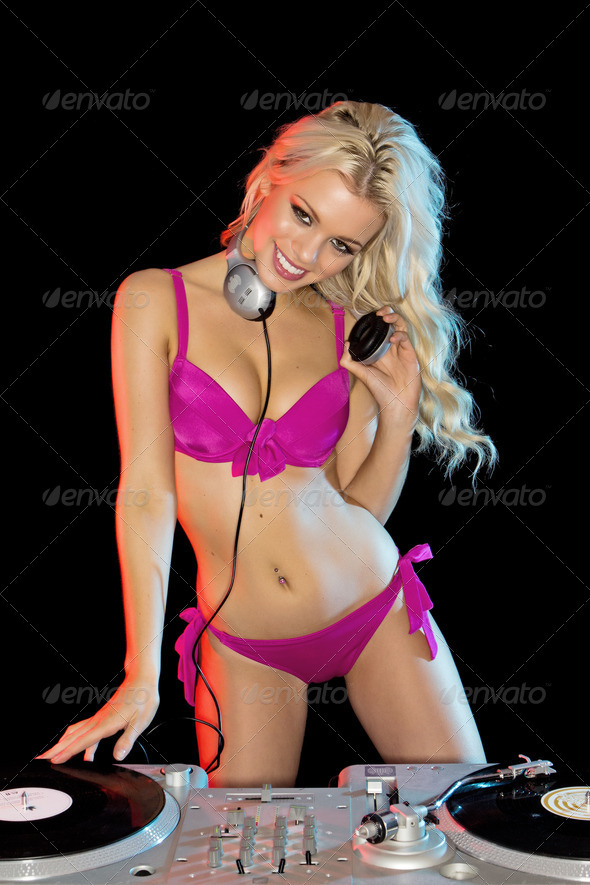
Il successo in Europa e l'evoluzione del genere
In Europa la musica house iniziò a diffondersi già dal 1986 in
Inghilterra. Nel Marzo 1987 Marshall Jefferson, Frankie
Knuckles, Adonis e Larry Heard fecero un tour in Gran
Bretagna, dopo il grande successo da classifica di alcune tracce
della Chicago House, come "Jack Your Body" e "Love Can't
Turn Around". Nel frattempo anche a Ibiza, già nota da fine anni
settanta per la sua vita notturna, il nuovo suono di Chicago si
era diffuso in numerose discoteche come l'Amnesia, dove veniva
suonato in feste all'aria aperta e accompagnato dall'assunzione
di ecstasy, droga che divenne simbolo delle discoteche.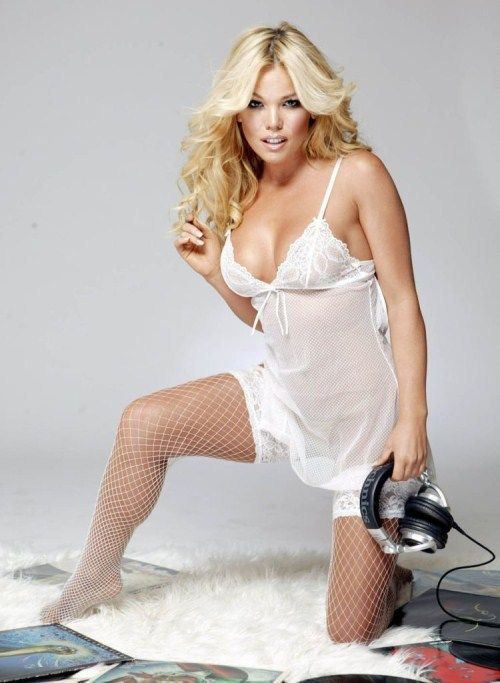

L'anno chiave per l'esplosione dell'house in Inghilterra fu il 1987,
quando dj come Paul Oakenfold e Danny Rampling importarono
il suono di Ibiza nelle discoteche britanniche, in particolar modo
a Londra (Shoom), a Birmingham (Heaven, il Future, Spectrum e
il Purple Raines) e Manchester (Hacienda) L'anno seguente la
moda dell'acid house, e con essa il consumo di ecstasy, si
diffuse a macchia d'olio in tutto il paese, diventando un vero e
di questa "Second Summer of Love" (come fu definita dai mass
media) furono i rave party, manifestazioni musicali molto spesso
illegali organizzate all'interno di aree industriali abbandonate o
in spazi aperti, che divennero in breve tempo un problema di
ordine pubblico nella rigida Inghilterra dell'epoca Thatcher.
Nonostante l'origine dei rave party illegali sia avvenuta
all'interno della scena house, negli anni successivi la musica
ascoltata all'interno di essi è diventata la techno con i suoi
sottogeneri, e la musica trance. La house invece ne è stata
esclusa.

Nel 1991 a Londra si inaugurerà il Ministry of Sound, il cui sound
system era stato progettato su ispirazione del Paradise Garage
di Larry Levan, e che con gli anni diventerà una delle discoteche
più famose del Mondo per la cultura della House e della Dance in
generale. Dal 1988 al 1993 la UK House otterrà nel Nord Europa
un grande successo nelle classifiche di vendita tanto che molti
gruppi (non solo inglesi) e crew di musica house o techno/rave
spesso si esibivano nel programma Top of the Pops. Dal 1990 al
1993 l'emittente britannica BBC2 addirittura aggiunse al suo
palinsesto un programma specifico sulla musica house e techno
(con delle parentesi hip hop): "Dance Energy". Anche in questo
caso gli artisti del settore più famosi si esibivano live. Diversi
anni dopo, nel 1999, viene aperto a Londra un altro noto locale
specializzato in questo genere: il Fabric, una discoteca con delle
tecnologie all'avanguardia, come i trasduttori nella
pavimentazione in grado emettere le basse frequenze della
musica.

In Italia, anche se dall'inizio del 1987 suonavano nelle discoteche
Love Can't Turn Around, Move Your Body, "House Nation e Jack
Your Body, la musica house divenne famosa dall'estate del 1988
con pezzi come Theme To S'Express degli S'Express e pochi
mesi dopo Good Life degli Inner City, Jack To The Sound Of The
Underground di Hit House, Get Real di Paul Rutherford, Wait di
Kym Mazelle e Say!Rayo! dei Brooklyn Boyz Choir, che si
inserirono ai vertici delle dance chart. L'anno seguente poi
nacque una vera e propria scena house italiana (definita
"spaghetti house") da cui arrivarono numerosi successi
internazionali come "Ride On Time" di Black Box, Numero Uno
di Starlight Sensation e Touch Me di 49ers.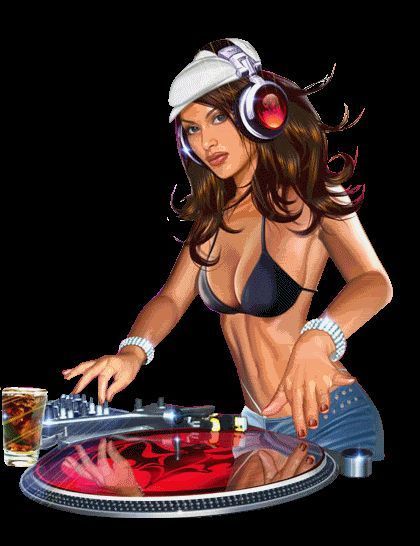

Nei primi anni novanta la house si diffuse in tutta Europa e,
fondendosi con altri generi musicali, diede vita a una serie di
derivazioni, fra cui l'eurodance. Brani come Rhythm is a Dancer
degli Snap!, Please Don't Go di Double U e What is Love di
Haddaway, segnarono l'ascesa nelle classifiche del nuovo
genere. In questo periodo infatti le discoteche iniziarono a
"specializzarsi" in un certo tipo di musica dance (eurodance,
techno/rave, house), attirando al loro interno una determinata
fascia di pubblico appassionato per ogni tipo di musica da
Loving Arms" di Billie Ray Martin, Make The World Go Around di
Sandy B, e Hideaway di De'Lacy, raggiungono un grande
successo nell'ambito della house più distaccata dal filone
underground. Nel biennio '98/'99 seguiranno la stessa strada
alcuni noti classici dance/house, come Music Sounds Better
with You degli Stardust, Needin' U di David Morales, Don’t Call
Me Baby dei Madison Avenue, Big Love di Pete Heller, Red Alert
dei Basement Jaxx, Sing it Back di Moloko, e U Don't Know Me
di Armand Van Helden.
Altri importanti sottogeneri sono la già citata Garage house,
diffusa soprattutto negli USA, su ispirazione di Larry Levan e del
suo locale (che intanto nel 1987 chiuderà i battenti, giusto
cinque anni prima della morte del DJ per AIDS), che dà il nome al
genere ed è caratterizzata da un minore uso di suoni elettronici
e da una maggiore melodicità, incarnando quindi al meglio la
derivazione "disco"; la Latin house (lanciata da Little Louie Vega
nei primi anni novanta), nata dall'unione tra house music e
sonorità latino americane. Particolare menzione merita anche la
 French house, nata a fine anni novanta, che rivisita la tradizione
French house, nata a fine anni novanta, che rivisita la tradizione
disco francese e che si pone all'interno di un contesto musicale
definito "french touch", una scuola di DJ d'oltralpe che portano
al successo oltre alla house, anche nu jazz e techno con forti
contaminazioni funk. Importanti nomi di questa corrente sono i
Daft Punk, Dimitri from Paris o gli Africanism, di cui fa parte Bob
Sinclar, che alla fine degli anni 2000 riporterà la musica house
nelle classifiche internazionali arricchendola di contaminazioni
Dancehall; dai primi anni 2000 l'house assurge a vera e propria
musica da tormentone, prendendo il ruolo avuto fino ad allora
dall'eurodance, che iniziava a perdere colpi. Tra i successi più
significativi dell'ultimo decennio ricordiamo "Another Chance"








 Structural characteristics of the genre
Structural characteristics of the genreThis genus is characterized by a metric 4/4 with casedownbeat of every quarter, sometimes enriched by rhythmic themes moreprocessed. A fixture is the "snare" (snare) on beatsequal and a "hat" (flat) backbeat to accompany tourslow in one or two beats. The bottom may be sound,electric or synthetic. This rhythm section is a basefor the melody part which is composed differently dependingGenre but who has common elements such as the presence ofsimple melodic phrases of piano, acoustic guitars orelectric funk or jazz, complex solos winds, cordofoni and linesvoice-influenced funk and soul. The frequency is metronomictypically 105/110 bpm with peaks of 130/132. On average,house songs are played around 125-130 bpm.The writing of a piece house almost always starts with a"Introduction" composed of just drum sounds, culminatingin a break of only pad made (in Italian called "carpet harmonic":electronic sounds of way), until reaching the thememain, with its variations. Then follows long breakgreater, breath and finally a new central theme (mayberepeating the refrain) and a tail to close thepiece. The introduction and tail are key parts becauseDj allow to put two pieces in sequence without theaudience can feel the change.
The forerunner of the genre was the disc jockey David Mancuso, whowith its private parties at the club The Loft influenced DJs likeFrankie Knuckles and Larry Levan Nicky Siano, who in the early 'seventies from the console of Gallery in New York were the firstto experiment with new ways of music like "beat matching"that is to bring the same "time" two discs playedconsecutively, and then switch between them bycontinue the music without solution of continuity.Another important innovation was to use the Gallerya console equipped with three plates: the first two used for the discswhile the third allowed to place in the songs and effectssounds chosen by DJLevan in 1976 was called to the room that would make him one of thegreatest DJs of all time: the garage at No. 84 King Street, that theits actual inauguration (1978) was renamed ParadiseGarage. Larry Levan and Paradise Garage became greattogether, almost one identity: Levan had a musical tastesuperfine and innovative, the Garage sounded like any venueHe had never done due to its origins (it was a realgarage for cars) and thanks to its powerful sound system. Of itIt came the birth of a new sound, a new musical genrethat today goes under the name of House Garage.Knuckles in 1977 moved to Chicago, becoming the djWarehouse. In the years following his way of mixing discswith pattern of drum machines and soul vocals gained moremost successful and began to be imitated. The official birth
like you can conventionally traced back to 1983, when
the record Imports Etc Chicago began sellingdiscs under the name of "house music" even if theKnuckles himself, it identifies the exact time of birth of theusually with the day when he ran into a bar in Chicagoexposing a sign "Here we play House music" The firstrecord label house music was the Trax Recordsentrepreneur Larry Sherman, born in 1985. Always inAlso that year he left a catalog of D.J. Internationalowned by Rocky Jones.Among the first albums released by the label, as well as Your Love (inThis first demo version) Jamie Principle,
 worthy of mention include On and On (1984) Jesse Saunders (thefirst record house official history and "Set It Off" (1985)Walter Gibbons. These early discs were played up to1985 only in certain clubs like the Music Box (formerWarehouse: 1983 Ron Hardy took the place of FrankieKnuckles) or the Paradise Garage. In the city of Chicago, however,They could listen to the radio and WBMX radio show
worthy of mention include On and On (1984) Jesse Saunders (thefirst record house official history and "Set It Off" (1985)Walter Gibbons. These early discs were played up to1985 only in certain clubs like the Music Box (formerWarehouse: 1983 Ron Hardy took the place of FrankieKnuckles) or the Paradise Garage. In the city of Chicago, however,They could listen to the radio and WBMX radio show"Saturday Night Is not No Jive Chicago Dance Party" whereThey alternated the most famous DJs in Chicago and New York (in aparticularly those of the famous "Hot Mix 5"). In the GreatApple instead Tony Humphries and Kenny Carpenter, half yearsEighty played the first house on Radio Kiss FM. WhileKnuckles was focused on the style of Chicago house, Levan,inspired by the dance scene in Chicago, he invented the genre"Garage": slower and more connected to the music Soul.

In 1986 the genre became popular around the world even ifyet the term "house music" was hardly used. In the summer ofThat year I Can not Turn Around Project JM Silk becomes thefirst record house that comes to the number one rankingBillboard dance.
In the same period he became famous indiscotheques Move Your Body of Marshall Jefferson, the first dischouse imported into Europe. The international breakthroughpoint came when between January and February 1987 Jack YourBody of Steve "Silk" Hurley arrived at the first position of the UKChart (it was the third song to have a housevideoclip after Love Can not Turn Around and Shadows of yourLove). Larry Heard threw Can you feel it, who opened the vein deep housewhich Chicago was becoming spokesman. Other largesuccess of the mid-eighties were Whatcha GonnaDo and If You Should Need A Friend of Blaze, Music is the key toSteve Hurley, No Way Back Adonis, Pleasure Control Onthe House (Marshall Jefferson), Showin Out of Mel & Kim (theEnglish first disco house), House Train Risse, Jack TheBass, House Nation and Love Can not Turn Around Farley
Larry Heard threw Can you feel it, who opened the vein deep housewhich Chicago was becoming spokesman. Other largesuccess of the mid-eighties were Whatcha GonnaDo and If You Should Need A Friend of Blaze, Music is the key toSteve Hurley, No Way Back Adonis, Pleasure Control Onthe House (Marshall Jefferson), Showin Out of Mel & Kim (theEnglish first disco house), House Train Risse, Jack TheBass, House Nation and Love Can not Turn Around Farley
"Jackmaster" Funk.
 Larry Heard threw Can you feel it, who opened the vein deep housewhich Chicago was becoming spokesman. Other largesuccess of the mid-eighties were Whatcha GonnaDo and If You Should Need A Friend of Blaze, Music is the key toSteve Hurley, No Way Back Adonis, Pleasure Control Onthe House (Marshall Jefferson), Showin Out of Mel & Kim (theEnglish first disco house), House Train Risse, Jack TheBass, House Nation and Love Can not Turn Around Farley
Larry Heard threw Can you feel it, who opened the vein deep housewhich Chicago was becoming spokesman. Other largesuccess of the mid-eighties were Whatcha GonnaDo and If You Should Need A Friend of Blaze, Music is the key toSteve Hurley, No Way Back Adonis, Pleasure Control Onthe House (Marshall Jefferson), Showin Out of Mel & Kim (theEnglish first disco house), House Train Risse, Jack TheBass, House Nation and Love Can not Turn Around Farley"Jackmaster" Funk.
The synthesizer Roland TB-303
Again in 1986, another Chicago disc jockey, DJ Pierre,
invented acid house, a type of house built aroundsounds, in fact, "acidic" and hypnotic synthesizer RolandTB-303. The first official single of the new genre was Acid Tracks(1987) of Phuture (DJ Pierre of which he was a member).In August 1987 he came Pump Up The Volume of MARRS (CjMackintosh and Dave Dorrell): a strange disco house Britishcampionava that old pieces of funk and early seventies
some hip hop songs eighties (ten songs
all). He managed to sell four million copies worldwide tothe end of that year. In the same period depopulated in the sceneNew York underground Beat Dis Young Bomb the Bass:much like Pump Up The Volume in the musical structure(Continuous resampling of old pieces and music by TV seriesand famous westerns of the sixties, as the sample of the film TheGood, the Bad and the Ugly). The disc had a smiley oncover that later characterized the iconography of raveEnglish acid house culture.In 1988, the year of the golden house, the protagonists were the InnerCity (from Detroit) and S'Express (Great Britain), who with
their songs brought such success to pop
international. The producer of house music, however, was more activeTodd Terry (sometimes under the name "Royal House")that dominated the dance charts with Can You Party, A Day In TheLife, Bango and Weekend. Your remarkable the catchy clubLove (official radio version) Frankie Knuckles & JamiePrinciple, Strings Of Life Is Rhythim Rhythim, of DevotionTen City, Someday by Ce Ce Rogers, I Want You and You Used ToHold Me by Ralphi Rosario, Reachin 'of Phase II of Night Moves
Rickster, Can you feel it (vocal version) of Fingers Inc.,
Bass! Simon Harris, The Party of Kraze, We Call It the AcieedD-Mob, In-Ten-Si-T Mickey Oliver, The Only Way Is Up Yazz,Work It To The Bone of LNR, Stakker Humanoid Humanoid andPromise Land by Joe Smooth. In autumn he released the historianhard hip house I'll House You Jungle Brothers of whichIt contained the sample Can You Party.
In 1989 it opened as the current hip house with Get Up On TheDance Floor by Rob Base & Dj Ez Rok and Turn Up The BassTyree Cooper. Lil 'Louis published which earned him the French Kisscontract with Epic and was banned in England for hishighly erotic content.
People Hold On Coldcut and
Lisa Stansfield became the hit ballad more in Europe. The power ofmarket of this kind was represented by the best groupBelgian Technotronic, who with Pump Up The Jam to arrivesecond best-selling American. AlwaysIt was published in 1989 the first Italian disco houseexport: Ride On Time by Black Box (eight hundredcopies sold only in England and the first position of the USDance Chart billboard).In 1990 continued the trend of hip-house with Mr. Lee, theBeatmasters, Fast Eddie, Double Trouble, Deskee, 2 In A Roomand Tony Scott. The C & C Music Factory that two years earlierhad produced the floorfiller A Deeper Love, had theirworldwide success with Gonna Make You Sweat: house songsophisticated that it contained some elements of hip hop. In that yearcomes also the first single house of one of the pop star morethe world-famous Vogue Madonna. The song comes tonumber one on the bestseller American,
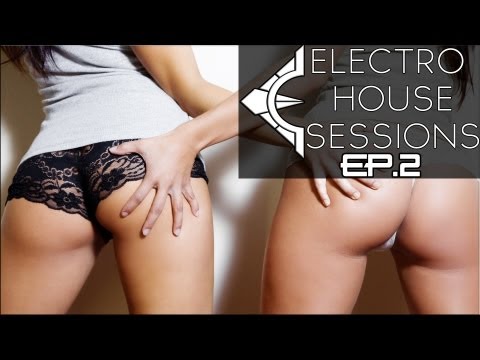
helping to further increase the popularity of the genrein the context of mainstream music. Garage in the field housethey are to mention the club classics of Deee-Lite (Groove Isin the Heart) and Alison Limerick (Where Love Lives).In the early nineties the European techno overlapped theHouse English (UK House), characterized mainly by a round ofpurposed and often also by a rhythmic breakbeat. Goremember the Brothers In Rhythm, the bizare-Inc., Crystal Waters,
Jaydee, the K-Klass, Gat Decore, Ce Ce Peniston and M-People.
The success in Europe and the evolution of the genreEuropean house music began to spread since 1986England. In March 1987 Marshall Jefferson, FrankieKnuckles, Adonis and Larry Heard toured in GreatBritain, after the great success of the ranking of some tracksof Chicago House, as "Jack Your Body" and "Love Can notTurn Around. "Meanwhile, in Ibiza, already known from lateSeventy its nightlife, the new sound of Chicago
It had spread to many nightclubs such as Amnesia, where it wasplayed in festivals outdoors and accompanied assumptionEcstasy, the drug which became a symbol of the clubs.The key year for the explosion at House in England was in 1987,when DJs like Paul Oakenfold and Danny Rampling importedthe sound of Ibiza discos British, especially
London (Shoom), Birmingham (Heaven, Future, Spectrum andthe Purple Raines) and Manchester (Hacienda) The following yearfashion acid house, and with it the consumption of ecstasy, youspread like wildfire across the country, becoming a realcultural phenomenon youth. One of the characteristic featuresThis "Second Summer of Love" (as it was defined by the massmedia) were the rave parties, musical events very oftenillegal organized in abandoned industrial areas orin open spaces, which soon became a problem ofpublic order in the rigid England Thatcher era.
Despite the origin of the illegal rave party took placeinside the house scene, in the years following the musicheard within them became the techno with itssubgenres, and trance music. The house on the other hand it has beenexcluded.In 1991 in London he will open the Ministry of Sound, whose soundsystem had been designed on the inspiration of the Paradise GarageLarry Levan, and that over the years become one of the discothequesthe most famous of World Culture and the House of Dancegeneral. From 1988 to 1993 the UK House will get in Northern Europe
a big hit in the charts so that many
groups (not just English) and crew of house music or techno / raveoften they exhibited in the program Top of the Pops. From 1990 to1993 British broadcaster BBC2 even added to hisschedule a specific program on house and techno music(With brackets hip hop): "Dance Energy". Also in thisIf the industry's most famous artists were performing live. Severalyears later, in 1999, opened in London is another well-known localspecializing in this genre: Fabric, a disco with thecutting-edge technologies, such as transducers inflooring that can emit low frequencies of
music.
In Italy, although from the beginning of 1987 they played in clubsLove Can not Turn Around, Move Your Body, "House Nation and JackYour Body, house music became popular since the summer of 1988with songs like the Theme To S'Express S'Express and fewmonths after the Good Life Inner City, Jack To The Sound Of TheUnderground Hit House, Get Real by Paul Rutherford, Wait byKym Mazelle and Say! Rayo! of Brooklyn Boyz Choir, whichThey inserted at the top of the dance charts. The following year, thenHe was born a real Italian house scene (defined"Spaghetti House") from which came many successesInternational as "Ride On Time" Black Box, Number One
Starlight Sensation and Touch Me by 49ers.
In the early nineties the house is spread throughout Europe and,merging with other musical genres, he gave rise to a series ofderivations, including the eurodance. Songs like Rhythm is a Dancerthe Snap !, Please Do not Go by Double U and What is LoveHaddaway, the marked rise in the rankings of the newgender. In this period the clubs started"Specialize" in a kind of dance music (Eurodance,techno / rave, house), attracting to them a certainsegment of the public keen for all types of musicdiscoteca.Nel '95, however, The Bomb of Bucketheads, "YourLoving Arms "Billie Ray Martin, Make The World Go Around bySandy B, and Hideaway De'Lacy, reach a large

Success at the house and more detached from the strandunderground. In the years '98 / '99 will follow the same pathsome well-known classical dance / house, as Music Sounds BetterYou with the Stardust, Needin 'U David Morales, Do not CallMe Baby of Madison Avenue, Big Love by Pete Heller, Red AlertBasement Jaxx, Sing it Back by Moloko, and U Do not Know MeArmand Van Helden.
 Other major sub-genres are the aforementioned house Garage,widespread particularly in the US, inspired by Larry Levan andits local (that meanwhile in 1987 will close its doors, rightfive years before the death of DJ for AIDS), which gives its name tokind and is characterized by a decreased use of electronic soundsand more melodic, so embodying the bestderivation "hard"; the Latin house (launched by Little Louie Vegain the early nineties), born from the union between house music andLatin American sounds. Special mention should alsoFrench house, born in the late nineties, which revisits the traditionFrench disc and which arises within a musical context
Other major sub-genres are the aforementioned house Garage,widespread particularly in the US, inspired by Larry Levan andits local (that meanwhile in 1987 will close its doors, rightfive years before the death of DJ for AIDS), which gives its name tokind and is characterized by a decreased use of electronic soundsand more melodic, so embodying the bestderivation "hard"; the Latin house (launched by Little Louie Vegain the early nineties), born from the union between house music andLatin American sounds. Special mention should alsoFrench house, born in the late nineties, which revisits the traditionFrench disc and which arises within a musical context
called "French touch", a school of DJs across the Alps leadingsuccess over the house, even nu jazz and techno with strongcontamination funk. Important names of this current are theDaft Punk, Dimitri from Paris or Africanism, which is part of BobSinclar, who in the late 2000s back house musicin international rankings enriching contaminationDancehall; by the early 2000s, the house becomes the realmusic smash, taking the role played so fardall'eurodance, which began to falter. Among the successesSignificant last decade include "Another Chance"(2001) by Roger Sanchez and "The Weekend" by Michael Gray(2004).
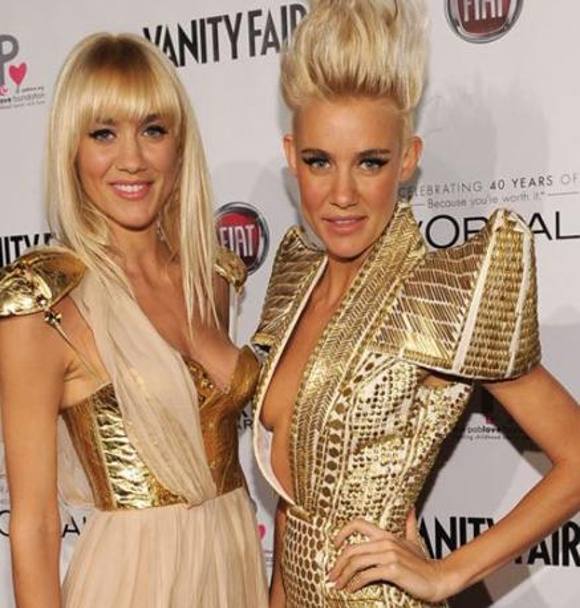





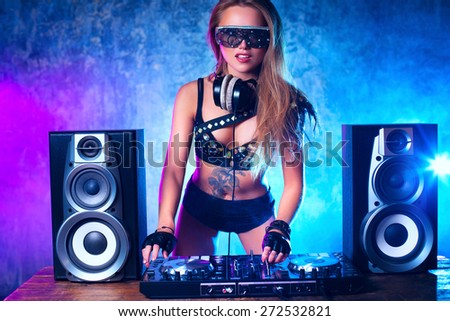
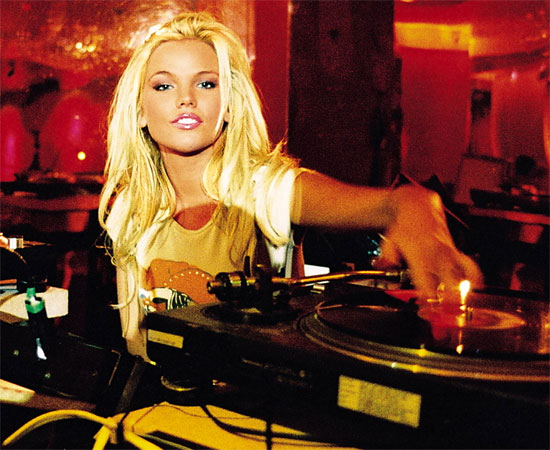
Nessun commento:
Posta un commento